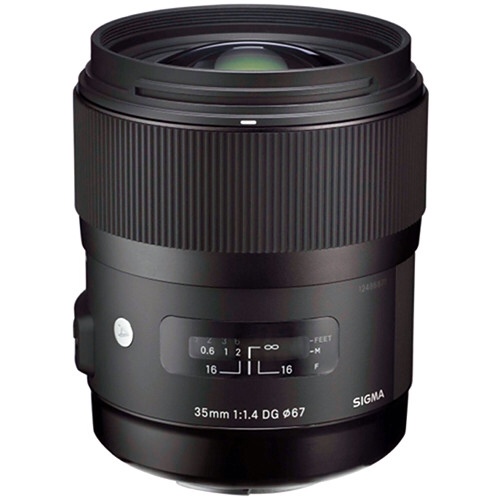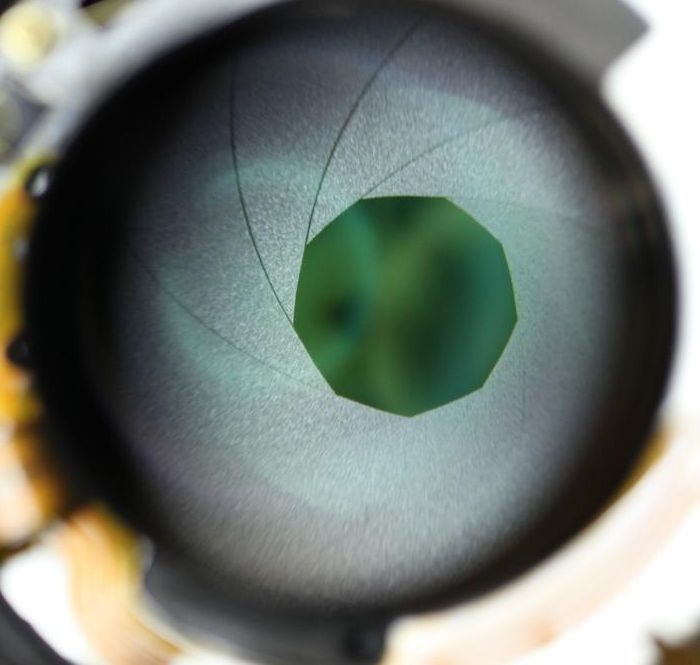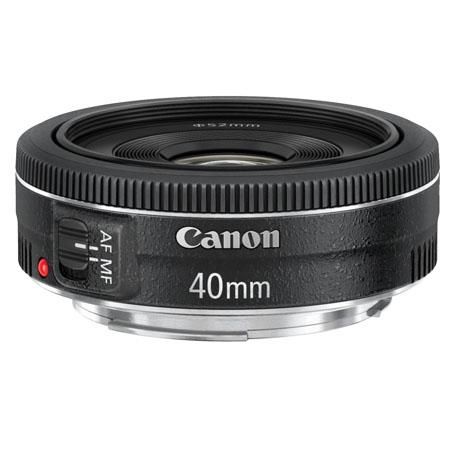
Canon’s EOS M – First Impressions
Finally, my Canon EOS M is here. First impression is definitely positive. The body is well made and feels solid, no plastic feeling at all. Same for the kit lens (EF-M 18-55mm f/3.5-5.6 IS STM), which is made of metal (mount and lens) and is by no way comparable to the kit lenses Canon delivers with its Rebel/EOS xxxD DSRLs. Unfortunately neither the EF-M 22mm f/2 STM nor the EF/EF-S adapter have been shipped to me so far.
I will make a somewhat different review here. A review that will extend over various weeks of use and testing. No lab tests or pixel peeping galore, but a practical test that will investigate how well the Canon EOS M is suited for travel photography. And that’s the point I want to share with you: I am leaving for a month-long trip to Myanmar (formerly Burma) on Friday, and the EOS M with the EF-M 18-55mm will be in my baggage. I start the review today with my impressions and first thoughts, and will later add new findings and pictures while abroad. Stay tuned for the first travel photography review of the Canon EOS M.
Ergonomics
The EOS M is really small. If you put an iPhone 3GS in front of it, the iPhone covers the entire camera. Nevertheless the size, the EOS M feels solid and well build (it has a magnesium alloy). The look is simple and without fuzz. If you have big hands the EOS M may feel really small. If you are used to DSLRs, especially those above the Rebel/xxxD series, then you may miss the advantages of a robust and rubberized grip. But that’s nothing that you will perceive as a limit. A camera so small and light weighted doesn’t really need it. One thing: mount the strap and use it to have a better grip.
It’s always hard to write about ergonomics, because it is often a subjective matter. As far as I am concerned, there are no issues. Your mileage may vary. The EOS M is not really pocket-sized, at least not with the EF-M 18-55mm lens. It may fit in some pockets, like the ones on an overcoat or a large jacket (I had no problems), but it is not a super small compact camera that fits in your jeans’ pockets. With the EF-M 18-55mm the EOS M is easy and comfortable to hold and to shot. Having build such a small camera around an APS-C sensor is awesome.

Touchscreen and controls
The 3 inches 1040k, gorgeous touchscreen could be the highlight of the EOS M. Being a DSLR shooter I was initially concerned about the lack of physical controls (really few on the EOS M), and about how much that could slow down my photographic work. Nope, and kudos to Canon for having made it right. The combined use of the control dial and the touch screen works like a charm. It will take you very little to get used to it, and to like it. Using the touchscreen together with the control dial is the way that works best for me. But everything can be done using the touchscreen only. The quick access icon (upper left corner) gives you instant access to all the important settings. Changing from Av to Tv, or to another shooting mode, as well as changing AF modes and other settings, is easy and swift. All settings can be accessed very quickly. The icons are big enough and the touchscreen works well also for people with bigger hands (like me). If you want, you can have all sort of information displayed on the screen (including histograms and other amenities). Again: kudos to Canon for having done it right.
The only issue (not a real one) I encountered with the touchscreen was that I was inadvertently changing settings by accidentally touching the screen with the palms of my hand (e.g. while walking around in the streets for shooting). It happened that I changed the white balance to shade without noticing it. I was wondering about the very warm (and wrong) colors of my pictures, and finally found out what happened. Not really a trouble, since it depends on how one holds respectively carries around the camera. Since I am now aware about that, it never happened again that I inadvertently changed settings.
The EF-M 18-55mm f/3.5-5.6 STM lens
The EF-M 18-55mm f/3.5-5.6 STM is well made and gives a feeling of solidness. Mount and barrel are made of metal, it feels rugged enough and not plastichy or cheap at all. This should be considered by those complaining about the price of the EOS M (more later). I wish Canon would deliver similar well built kit lenses also with its entry level DSLRs. The lens has some properties you find only in higher priced gear, like manual focus overwrite, a well damped AF ring, no zoom creeping, no rotating front element (filters can be comfortably used). The lens does not have an AF/MF switch, which contributes to its plain and unadorned design. The aesthetics are very minimalistic, a robustly build lens without aesthetical gimmicks. Needless to say, Canon’s image stabilization works perfectly. Canon claims a 4 stop advantage, and I am starting to believe it is true. Sharpness and resolution are very good. The stepping motor (that’s the STM in the name) is very silent and can barely be heard.

Image quality
I don’t have the equipment for a lab test, so what I am going to write may to some degree be my subjective impression. On the other hand, there are enough EOS M sample pics around (see also below for some test shots). Image quality is excellent, and that’s not really a surprise given Canon’s long lasting tradition of high performing image sensors. It is also no surprise since the EOS M sports the same 18MP sensor and processing engine of the Rebel T4i/EOS 650D, a camera that has already undergone many reviews attesting the excellent image quality it delivers. One thing I noticed is that automatic white balance is working better than in previous Canon cameras (this has often been a weak point in Canon DSLRs).
Images are color rich in a balanced way, contrast is good, metering is almost always accurate. Almost always: there may be a slight underexposure (less than one stop imo) in bright daylight, and the usual tendency to overexpose in low light settings. Be aware that this depends also by the use you make of the auto lighting and highlight priority features. However, the EOS M delivers cutting edge DSLR image quality in a small and compact body. ISO is perfectly usable up to ISO 1600, and still delivers acceptable images at ISO 3200 (but noise is obviously present). ISO 6400 may be used, depending by the setting and further use of the picture, with ISO 12800 things start to get worse. The expansion mode ISO 25600 should be used only for emergency, or for artistic work (the noise is more film-like and grainy than on older Canon digital cams). I recommend you set the AUTO ISO to a max of ISO 3200 for maximum flexibility, but check before if ISO 3200 images still deliver what you are expecting. If you have to shot higher than ISO 6400 consider shooting RAW in order to not loose details due to the noise reduction algorithm.
The Auto Focus
After having read all sorts of complains and criticisms about the EOS M’s hybrid auto focus, I was really curios (and also worried) about what I would get. Let me state it immediately: the auto focus of the EOS M is not as bad as some reviews have suggested (first of all Engadget). It is (obviously) not au pair with a DSLR, and there is snappier AF on other mirrorless cameras, but it is perfectly usable and worked fine in over 95% of my photographic activity (so far). Be aware that I am using the native EF-M 18-55mm lens, and that auto focus may be much worse with the EF/EF-S adapter (most probably it is). I am not saying that the EOS M auto focus is perfect, it’s far from perfect. But it is not as bad as you may think. At least not when using the EF-M 18-55mm f/3.5-5.6 STM lens.
There is a good amount of available AF modes: Face Detection, AF tracking, FlexiZone Multi, FlexiZone Single. The fastest option you have is called Flexizone-Single. You also have the option to use Touch AF, which means you can tap on the screen where you want to focus and let the camera release the shutter after focus has been locked. Funny, and perhaps useful for those who are new to photography or are used to iphonography. While the EOS M auto focus may not be instantaneous at locking on, when it locks it is accurate and reliable. I have been told that the not instantaneous locking may have to do with the STM technology (implemented on both available EF-M lenses). Have to investigate this further. So far I am not much disappointed by the AF, it is adequately fast (in FlexiZone Single, and most of the time also in FlexiZone Multi), it is very accurate and it hunts only in dim light settings (where, for instance, the EF 50mm f/1.8 mounted on a Rebel would also hunt). FlexiZone Single allows you to change the focus point in an easy way simply by tapping on the screen where you want to focus (with or without touch shutter release). You can always put the focus point back at the center by using the delete button. When using focus tracking, you can tap on the screen where you want to focus and the EOS M will lock on that subject and trying to track it. It works better than I was expecting, but like many of its competitors the EOS M fails with fast moving subjects.
Where EOS M’s auto focus will probably let you alone is for settings I call “fast paced street photography”. Let’s assume you are walking on the street and suddenly a celebrity is walking around the corner. You see the chance for a great picture, you want to shot with blurred background and you want to shot burst to select the best among different pictures. You need fast (and fast tracking) AF. If you are into this, then use a DSLR.
Some of the harsh criticisms about the EOS M auto focus I have read are totally missing the point (in my opinion). This is obviously not the AF of the EOS 7D or EOS 5D Mark III, and if you have these in mind then the EOS M will disappoint you for sure. If you consider the EOS M for what it is, then it will not disappoint. In two weeks of usage I have to say that I can hardly understand some of the reviews I have read. I couldn’t get an idea about the AF’s performance with EF or EF-S lenses since the adapter hasn’t been delivered to me so far, nor do I have any experience with the EF-M 22mm. I am sure auto focus performance with the adapter is worse than with the native EF-M lenses. Others have told me that the EF-M 22mm is also more sluggish to focus than the EF-M 18-55mm. As soon as I can say something about it I will report here. However, the EF-M 18-55mm f/3.5-5.6 STM is most probably the lens where the not-so-exciting auto focus of the EOS M works best.
About the price
The EOS M with the EF-M 18-55mm goes over the counter for $849. In Europe the same kit with the addition of the Speedlite 90EX has a price tag around €800. Too expensive, really? I don’t think, given the high build quality of both the EOS M body and the EF-M 18-55mm f/3.5-5.6 STM lens. It may not be the most affordable MILC around, but the price is aligned with what you get: a high quality built camera and lens with cutting edge performance.
What I liked
- Compact size and light weight
- Superb image quality, cutting edge DSLR-like performance
- Very good low light/high ISO performance
- Responsive and very usable touchscreen (a highlight). You won’t miss the physical controls
- The EF-M 18-55mm f/3.5-5.6 STM kit lens. Sharp, and very effective image stabilization
- Solid build, both the EOS M body and the EF-M 18-55mm f/3.5-5.6 STM lens. Magnesium alloy for the body, metal for the lens
- Easy (and fun) to use from the beginning, even for newcomers and people not experienced with photography. Could be the most easy to use mirrorless interchangeable lens camera around.
What I didn’t like
- Battery is soon exhausted; expect to shot not more than 200-250 pictures with a full charge. This is annoying, especially for travel photography. I bought two batteries and will probably get a third one (if I am able to find it while abroad).
- The auto focus. Should be faster and better implemented. I will come back to the EOS M auto focus when abroad and shooting the EOS M in real world settings. But the AF is definitely not a highlight of the EOS M.
- No viewfinder.
- No focus peaking
- No lens hood
- Only two native lenses (so far)
Canon EOS M price check:
B&H Photo,
Adorama,
Amazon USA,
Amazon Canada,
Canon Canada,
Canon USA
Canon EF-M 18-55mm f/3.5-5.6 STM price check:
B&H Photo,
Adorama,
Amazon USA,
Amazon Canada,
Canon Canada,
Canon USASample Images (all shot using the EF-M 18-55mm f/3.5-5.6 STM lens, click on image to view it larger)






























